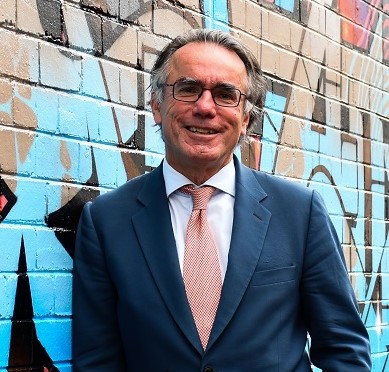By Anglicare Victoria CEO Paul McDonald 
Two decades ago after I had implemented the Victorian government’s Youth Substance Abuse Service, then opposition leader Steve Bracks asked for my thoughts on the merits and location of a potential safe injecting facility. I asked him how many facilities he was considering. He said five, an acknowledgment of the widespread damage being done by the heroin epidemic at the time.
The epidemic may be gone, but managing dangerous drug use remains a challenging health issue for the Victorian government. Behind all the emotion in the injecting room debate, there is a simple truth about Melbourne’s only operating facility in North Richmond – it works. It saves lives. Ambulance responses to drug overdoses are down. So is public injecting.
There are three points to be made about injecting rooms: more is less, location matters and the health benefits are undeniable.
In other countries, safe injecting rooms are an unremarkable part of the urban landscape. They are operated quietly and discreetly. With almost 120,000 visits in the first 18 months, the Richmond injecting room is one of the busiest in the world, serving around 4000 regular clients. This isn’t something we should be proud of. We need more of these facilities so that a single suburb isn’t carrying the whole load.
This month the Andrews government’s plans for a second facility are making headlines – as well as raising the blood pressure of traders who have weathered the last year of COVID lockdowns and are understandably wary about anything else that might affect their businesses.
The issue is not about the alleged rights and wrongs of the North Richmond facility. It’s that having only one safe injecting room operating in the whole of Greater Melbourne means a large number of users are funnelled into one small geographic area. This amplifies all the challenges of managing community expectations, interactions with the police and responding to concerns.
It may sound counterintuitive, but when it comes to safe injecting rooms, more is less. The more of them you have, the less regular clients you will have at each one. Steve Bracks was right about this – it helps to relieve the community pressure on each injecting room. Melbourne’s population is growing at an unprecedented rate, it is expected to overtake Sydney as Australia’s largest city by 2026. For a city this size, no less than three safe injecting facilities need to be established.
Secondly, the location matters. You can’t locate safe injecting rooms in sprawling meadows or industrial areas in the middle of nowhere, because drug use doesn’t work like that. Facilities like safe injecting rooms need to be in the populated areas where much of the drug use occurs, ideally close to drug harm and outreach services.
The Richmond location for the first injecting room was not chosen by accident. The drug use was there first. The perceived honeypot effect in Richmond can be addressed by opening more facilities, obviously with extensive community consultation and stakeholder involvement.
Any other potential locations should be chosen because they are already drug use hotspots where street injecting currently takes place. In this respect the proposed CBD location in Flinders Street makes sense, because it is somewhere that drug use and overdoses are commonplace. With around one fatal overdose a week on the street corners close to the proposed location, it is hardly surprising that the government is looking at the area of greatest need.
Lastly, while I’m not discounting the debate raised by retail traders and residents, these facilities have measurable health benefits. They are effective and they save lives. While they are not the panacea to the tragedy and crisis of heroin addiction, safe injecting rooms represent serious and effective progress towards harm minimisation.
We know drug prohibition hasn’t worked. Drug use will continue whether we approve of it or not. But the epidemic of fatal heroin overdoses from the turn of this century show just how high the stakes can be. The government’s investment in supervised injecting rooms is sensible, considered and caring. It is informed by humanitarian as well as health concerns.
More than 20 years on from that meeting with Steve Bracks, the Victorian government has made a clear decision to do what is right rather than what is easy. It should be commended for that.
Thanks very much to The Age newspaper, which originally published this opinion piece in print and online.


